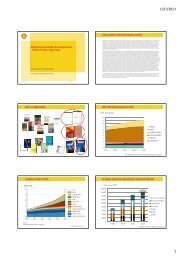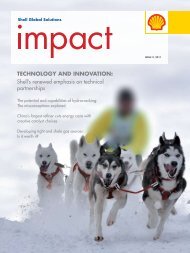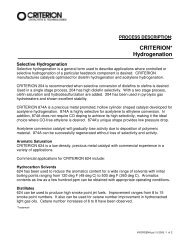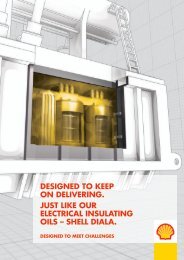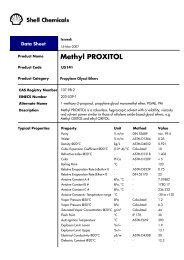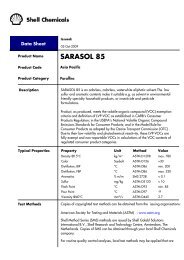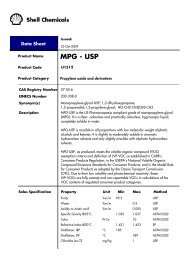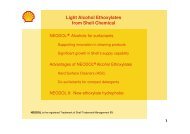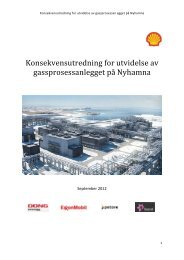Shell Bitumen - WAM Field Test Results Italy - Inspiring Solutions for ...
Shell Bitumen - WAM Field Test Results Italy - Inspiring Solutions for ...
Shell Bitumen - WAM Field Test Results Italy - Inspiring Solutions for ...
You also want an ePaper? Increase the reach of your titles
YUMPU automatically turns print PDFs into web optimized ePapers that Google loves.
Emission and occupational exposure at lower asphalt production and laying<br />
temperatures<br />
M. Lecomte<br />
<strong>Shell</strong> <strong>Bitumen</strong>, 307 rue d’Estienne d’Orves, 92708 Colombes, Paris, France<br />
F. Deygout<br />
<strong>Shell</strong> <strong>Bitumen</strong>, RD3, BP97, 76650 Petit Couronne, France<br />
A. Menetti<br />
Contech, <strong>Italy</strong><br />
Summary<br />
It is well known that reducing asphalt production temperatures has significant<br />
environmental benefits on emissions, occupational exposures and energy<br />
consumption. The hot mix asphalt industry has been aware of this <strong>for</strong> many years.<br />
The biggest challenge however has always been to achieve adequate asphalt<br />
mixture quality at lower or ambient operating temperatures.<br />
In recent years, new production processes at temperatures between 80 - 120°C have<br />
attracted much interest because of the possibility to approach or even obtain hot mix<br />
quality and having reductions in energy consumption, emissions and occupational<br />
exposures. <strong>Results</strong> of recent measurements on a site in Florence in <strong>Italy</strong> show that<br />
decrease in temperature offers a dramatic reduction in greenhouse gases emission<br />
and a considerable reduction of fume emissions and workers exposure, together with<br />
a 30% energy reduction. This confirms the great potential of this solution <strong>for</strong> the<br />
environment.<br />
1. Introduction<br />
<strong>Shell</strong> <strong>Bitumen</strong> is very active in the development of new technologies and in<br />
investigations to properly quantify the environmental benefits [1-5].<br />
This paper describes the results of recent emission and exposure studies carried out<br />
at Conglobit during the production of their new asphalt mixture, Greenfalt,<br />
manufactured at low temperatures and developed on the basis of the <strong>Shell</strong> patented<br />
warm asphalt mixture (<strong>WAM</strong>) technology 1 using foam [6]. It must be understood that<br />
in all cases (hot and warm production) the values determined are well below any<br />
occupational exposure or environmental limit. This clearly demonstrates that both hot<br />
mix and <strong>WAM</strong> Foam production are fully acceptable from an occupational and<br />
environmental point of view.<br />
In October 2006, during a trial on the high speed road Firenze-Pisa-Livorno in <strong>Italy</strong>,<br />
several air pollutants (CO 2 , CO, NO x , SO 2 , TOC and dust) emitted by the chimney of<br />
the mixing plant were measured by Det Norske Veritas AS. Simultaneously, emission<br />
measurements were carried out at three positions in the asphalt mixing plant. During<br />
the asphalt laying and compaction operations, the paving crew was equipped with<br />
fume collection devices <strong>for</strong> exposure measurements.<br />
1<br />
<strong>WAM</strong> is a <strong>Shell</strong> trademark<br />
1/11



